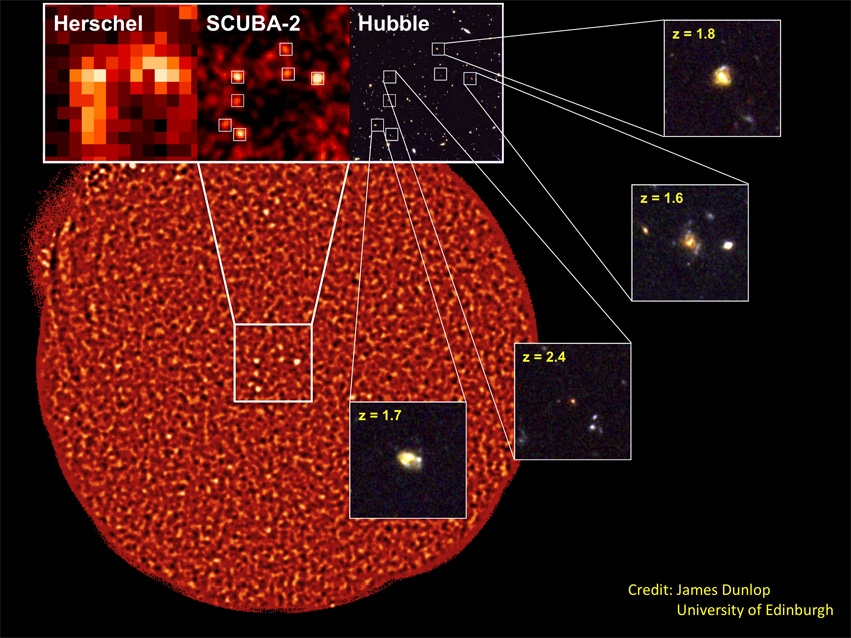SCUBA-2 is mounted on the world's largest sub-mm telescope, the 15-meter James Clerk Maxwell Telescope in Hawaii. The new project, called the SCUBA-2 Cosmology Legacy Survey, will run for three years and will use the camera to provide the clearest view to date of dust-enshrouded star-forming galaxies. These objects are so remote that the light we detect left them billions of years ago, so we see them as they looked in the distant past. With SCUBA-2 astronomers are able to study objects that existed as far back as 13 billion years ago, within the first billion years after the Big Bang.
Because stars form inside clouds of gas and dust, much of the ultraviolet light from young galaxies is absorbed by this cosmic dust which is then heated to a few tens of degrees above absolute zero (-273 degrees Celsius). The ‘warmed’ (but still rather ‘cool’) dust then emits the absorbed energy at far-infrared wavelengths, which is then further redshifted to longer sub-mm wavelengths en-route to the Earth by the expansion of the Universe.

The first image presented here is made using the SCUBA-2 camera at a wavelength of 450 microns. Credit: Jim Dunlop
Detecting such emission is a challenge, both because Earth-based telescopes are warm and hence glow at sub-mm wavelengths and because water vapour in the atmosphere both absorbs and emits light in this waveband. To get around the problems of the atmosphere, the latest sub-mm surveys have recently been conducted from space, using the Herschel Space Observatory. However, the relatively small size (3.5-metre diameter) of Herschel’s telescope means that the images it produces cover large areas but are rather fuzzy. The James Clerk Maxwell Telescope primary mirror is 20 times larger in area and can provide a much sharper view of the sub-mm sky.
“Edinburgh scientists and engineers worked hard to construct this revolutionary new instrument and, together with our colleagues in Canada and the Netherlands, we’re now seeing the fruits of our efforts. With SCUBA-2 we can study the most violently star-forming galaxies in the young Universe, and slowly but surely start to understand how the primitive cosmos evolved into the Universe we live in today,” said University of Edinburgh astrophysicist Professor James Dunlop, who co-runs the consortium.
STFC is the UK sponsor of astronomy and operates the Joint Astronomy Centre in Hawaii.






Comments